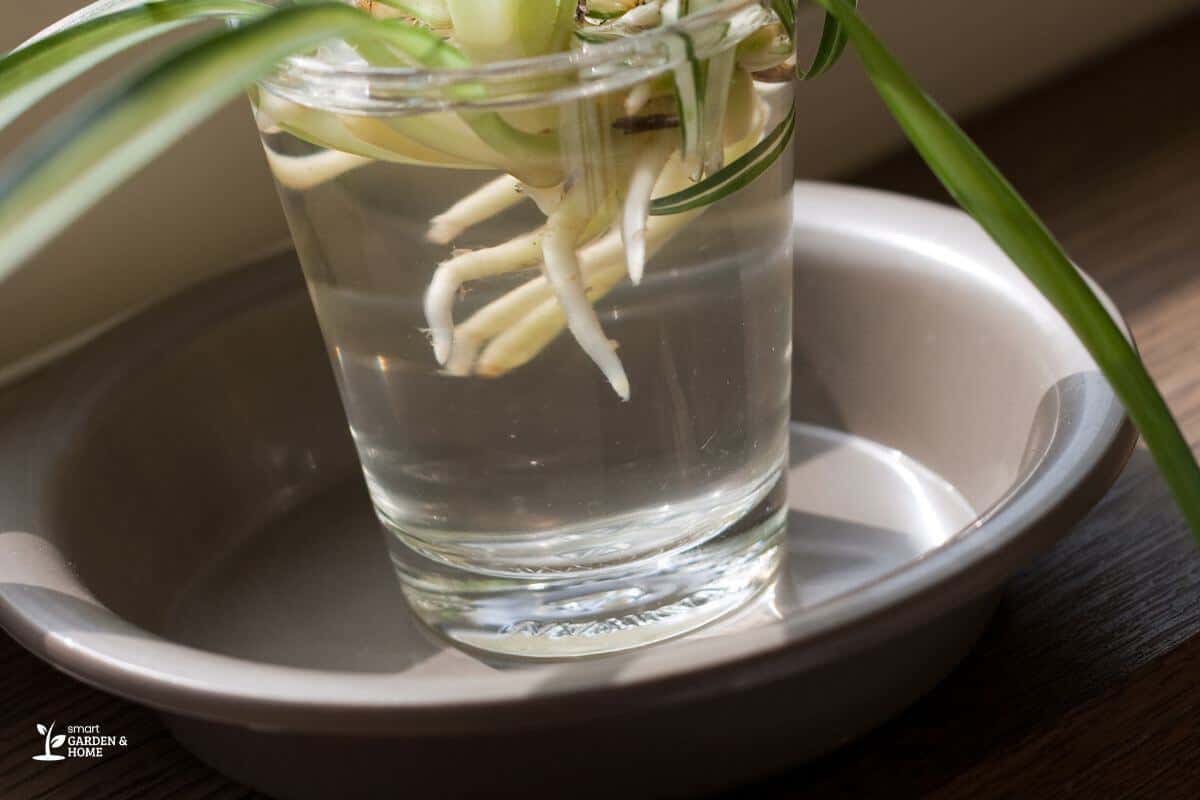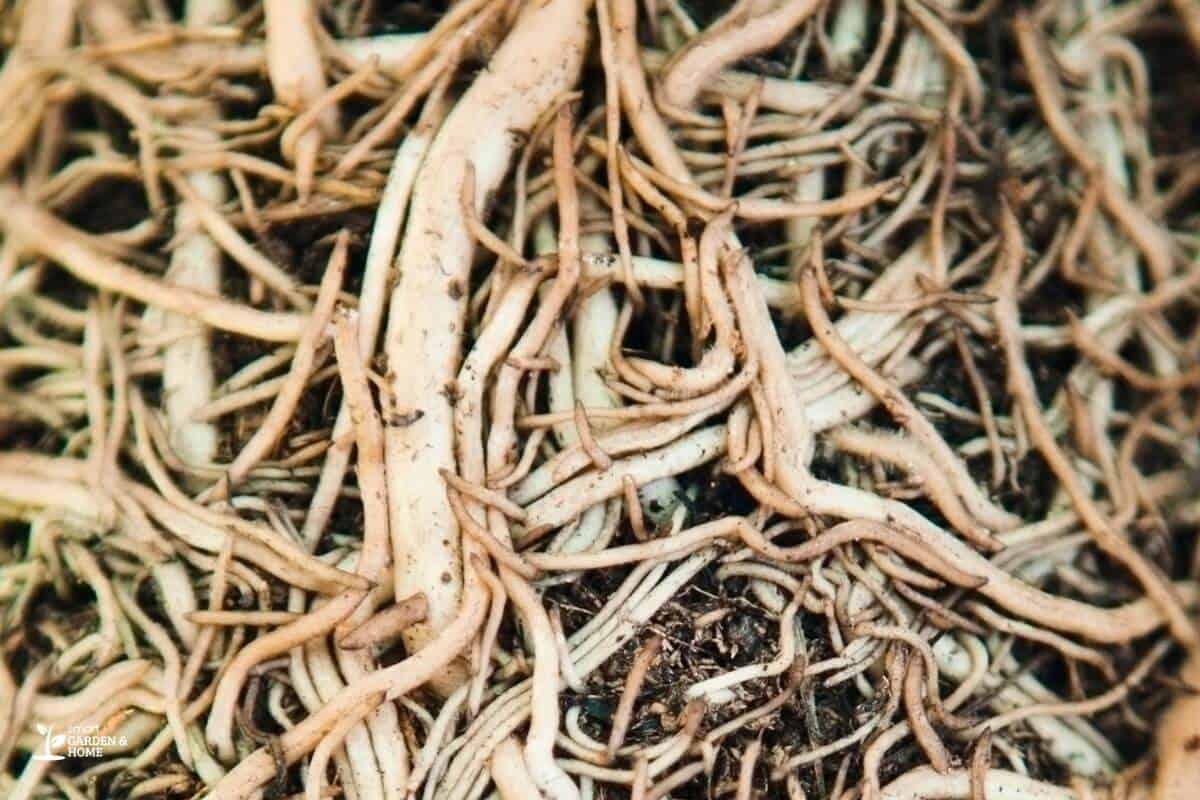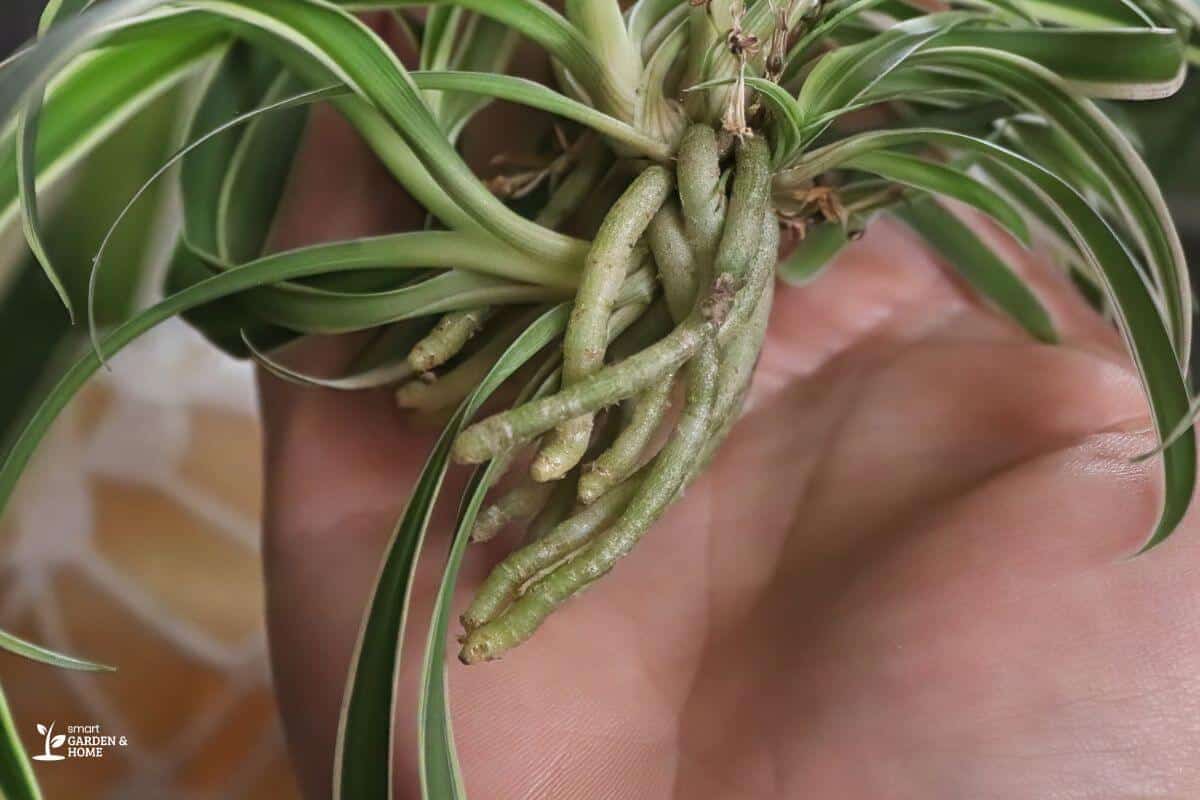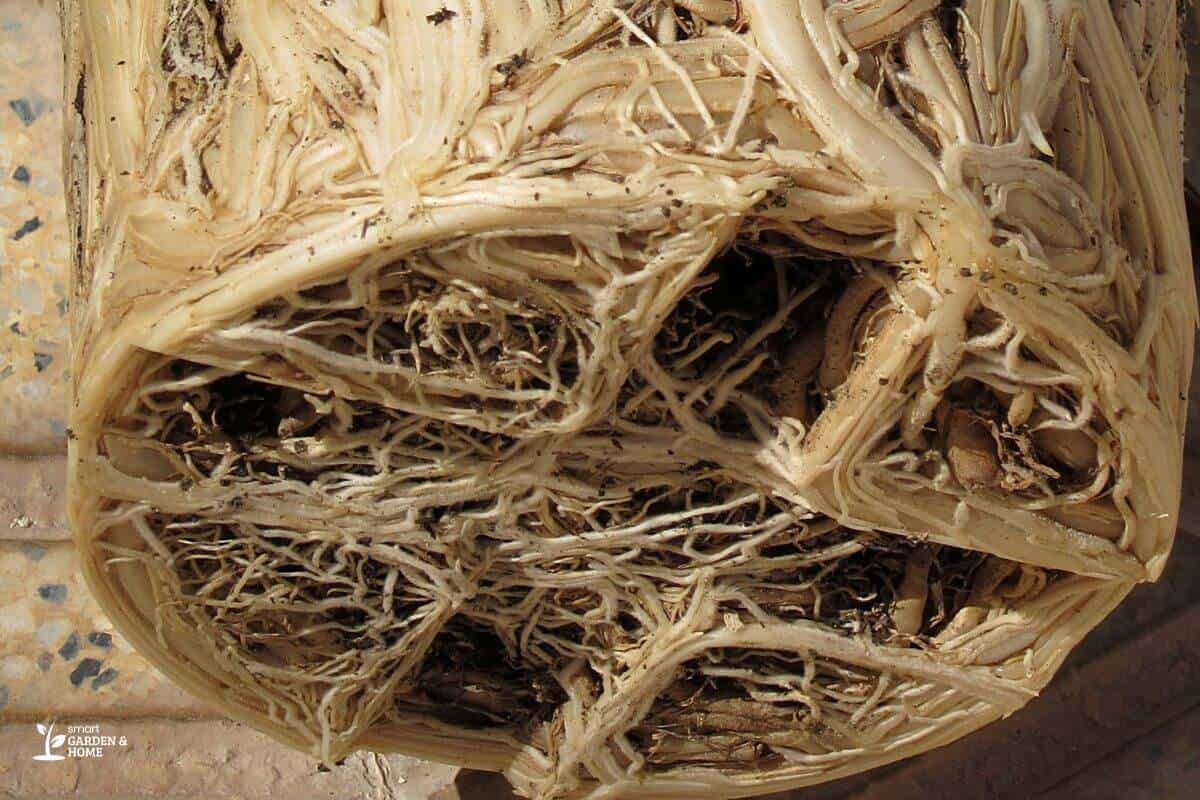Spider plants have two types of roots: thick and swollen tuberous roots and fine roots. The latter absorbs water and nutrients from the soil, while the tubers are what allow spider plants to store these substances for times of trouble.
You might be interested to know that spider plant tuberous roots can be eaten and are rich in nutrients. Moreover, they are also safe for pets and young children.
- Related Article: How to Take Care of a Spider Plant in the Winter
If you are eager to discover more about spider plant roots and tubers, then keep on scrolling.
Spider Plant Roots Overview

Spider plants have a dense root system that consists of tuberous roots and fine roots.
Tubers are specialized organs for the storage of nutrients and water. They can derive from stems or roots. These differ in their origin but have the same function.
In the case of spider plants, the storage organ is a root, like for example that of sweet potatoes or cassavas, while potatoes have stem tubers.
Numerous plants evolved tubers as an adaptation to difficult conditions, such as droughts.
Their tuberous roots are what allow your spider plant to survive during the cold season and thrive even if you forget to water it or fertilize it for a while.
Stressed spider plants may form numerous tubers that grow in clusters. This might be because of a chronic lack of water or because the plant is pot-bound.
In this case, the roots will start to grow upwards and will be visible above the soil.
If you start to notice thick swollen visible roots, it’s time to repot your mother plant, or else, this can compromise its health and result in droopy leaves.
Spider Plant Roots vs Tubers

As discussed above, spider plant tubers are a kind of root that differ from other roots in appearance and function.
The tuberous roots of a mother plant are thick, white, smooth, and fleshy. They are about 2-4 inches long and 0.2-0.4 inches in diameter.
They are more similar in appearance to stem tubers than to what we normally think roots look like.
The function of tuberous roots is to store nutrients and water to allow the plant to survive in times of dormancy during winter and to promote quick growth in the spring.
Spider plants also have fine, long roots that absolve the original function of this organ, which is the absorption of nutrients and water from the soil.
Tuberous roots of the mother plant can also be used to propagate spider plants by division even if propagating through spider plant babies is much easier.
Another way to grow this plant is by cutting off the baby spider plants and letting them grow roots in water.
Can You Eat Spider Plant Roots?

Even if in many countries spider plants are solely grown as ornamental plants, they are actually edible and are a rich source of nutrients.
In fact, mature spider plant leaves can be eaten as long as it is cooked in small quantities.
Spider plant leaves contain traces of the following:
- Phosphorus,
- Potassium
- Calcium
- Magnesium
Tuberous roots, on the other hand, are rich in:
- Sodium
- Potassium
- Lipids
- Amino acids
- Antioxidants
In their native countries, spider plants have been used medicinally, particularly by the Nguni of South Africa for pregnant mothers and young children.
In Chinese traditional medicine, they are reputed to help cure bronchitis, burns, and bone fractures.
Since everyone is different and more research is certainly needed, before you start to eat your spider plant it’s best to do a Universal Edibility Test. This is a simple procedure that is used to determine if a wild food may have adverse effects on you.
What is certain is that spider plant roots aren’t toxic to pets, even if there have been some cases where they have caused small problems if eaten in large quantities.
Usually, the issue is when pets munch on the green leaves. These contain a compound similar to opium that may cause sickness and is hallucinogenic for cats.
The roots, on the other hand, are completely harmless, so the problem is more that the spider plant might get damaged if your cat or dog starts digging in the soil for fun.
Spider Plant Root Care Tips

1. Water your spider plant when the top two inches of soil are dry and not before to avoid root rot. Remember that your spider plant is more likely to suffer from overwatering than underwatering.
2. Choose a pot with drainage holes and a well-draining soil mix.
3. Use distilled, filtered, or rainwater to avoid fluoride or chloride buildup. Tap water may contain chemicals and salts that could damage the roots’ capacity to absorb nutrients and water.
4. Fertilize using a low-strength product and avoid fertilizer altogether during the cold season. In the autumn and winter, spider plants are dormant and they don’t need nutrients, so salt accumulation could happen.
5. When propagating spider plants, use a clean knife, pruning shears, or scissors if you will be taking the baby plants from the parent plant. Also, take this time to remove any damaged or rotten roots from the parent plant.
6. Give your plant bright indirect light and mist it with a spray bottle to maintain a humid environment for them.
Final Thoughts on Spider Plant Roots
Spider plant roots are an important part of this popular houseplant.
They have a unique function of storing nutrients and water, which helps the plant survive during dormancy and promotes quick growth in the spring through summer.
Spider plants can also be eaten by humans, although it is best to do a Universal Edibility Test first as everyone is different.
Spider plant roots are also harmless to pets if eaten in moderation.
Taking proper care of your spider plant’s roots will ensure that it remains healthy and attractive for a long time. Who knows, it might even produce white flowers for you!
To learn more about Spider Plants, check out these other articles:
- Curling Leaves on Spider Plant
- Spider Plant Advantages and Disadvantages
- Spider Plant Getting Brown Tips
- Why Is My Spider Plant Falling Over
- Spider Plant Leaves Bending
Sources:


Thank you for the help with my spider plants! A very lovely and informative article.
My cats LOVE them and now I dont’ have to worry as much about the cats geting sick. I keep mine in the bathroom with the door closed and a grow-light on a timer so the cats can’t have full access to them and destroy them.
Although I have had several over many years, I still learned something new: Their roots are edible! That is so amazing. Thank you so much for sharing.